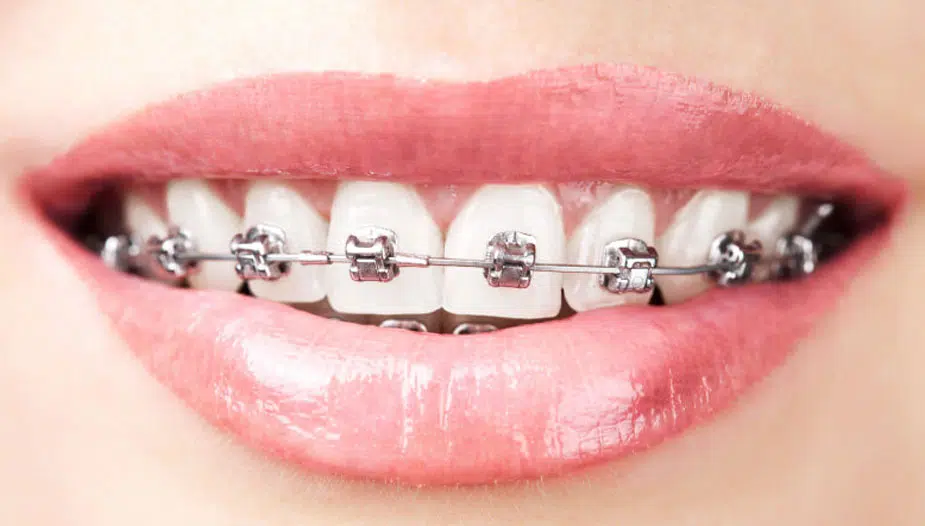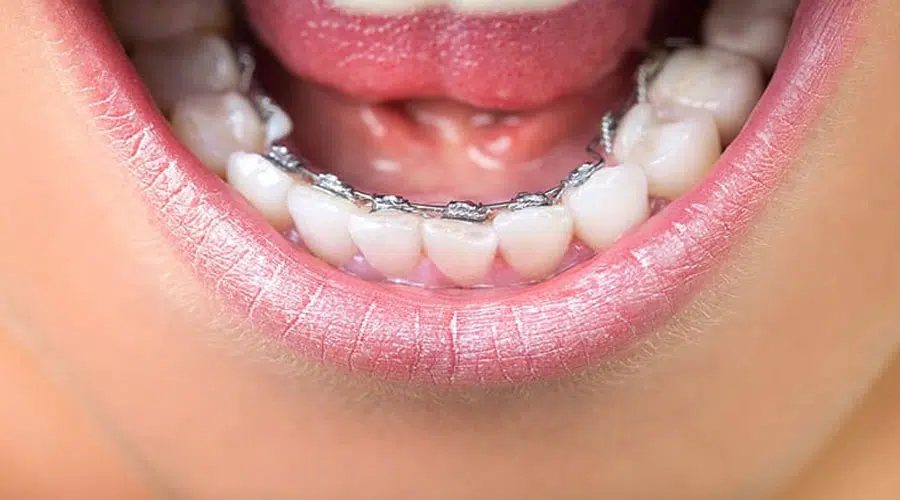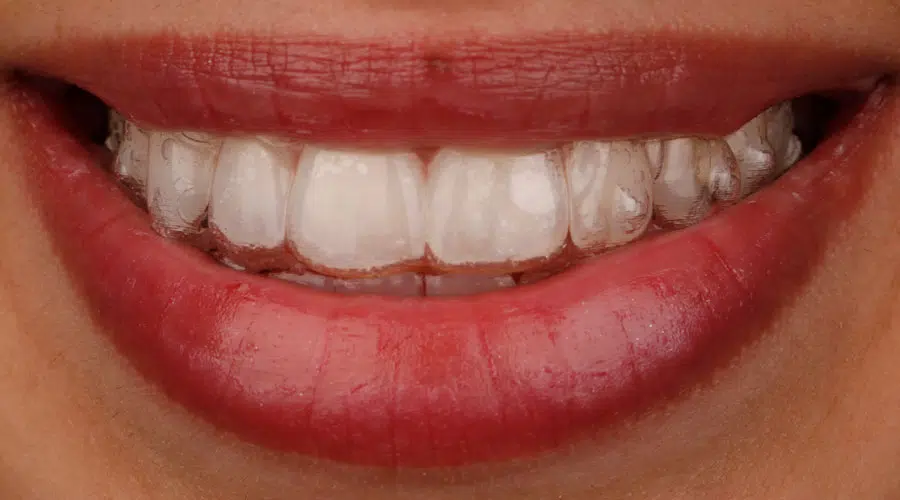Dental Braces
Knowing about new types of braces and how they reposition your teeth can help you make the right choice and achieve that beautiful smile you desire. For most people, getting dental braces means having their mouth filled with unsightly metal brackets and wires that are not so comfortable and end up causing sores and other problems. Now you do not have to worry about suffering from pain or lower self-esteem due to crooked or misaligned teeth and bulky braces, as several new types of braces are available to address your orthodontic needs. Call Gibbs Orthodontics Associates whether you are looking for affordable classic metal braces, clear fixed, or less visible ceramic dental braces.

To schedule the consultation for braces at our Manhattan’s Upper East Side office, or to learn more about types of braces and how they work, call us at (212) 535-4111 today. Whether you are looking for classic metal or less noticeable ceramic braces for yourself or your teen, Dr. Gibbs, and his team of experienced orthodontists, can assist you in finding the right style to match the shade of your teeth.
What Are Braces?
Dental braces are the most popular and effective orthodontic treatment for several reasons. They help to correct crooked teeth or bad bite, improve your ability to bite, chew and speak, and enhance your overall appearance. They can also prevent cavities, gum disease, and problems related to mouth movement. While braces create beautiful smiles, achieving those smiles is not easy. It requires time, patience, and a good orthodontist.
In the past, braces were ugly-looking, uncomfortable, metal contraptions that were painful to wear and caused sores and other damage inside the mouth. Orthodontics has come a long way, and now braces are less noticeable, more effective, and offer personalized treatment plans. Braces can also be fixed and worn at all times except when they are removed by a dentist, where the patient can take them off when they want to.
Types of Braces
These days there are a lot of options when it comes to braces depending on your dental needs and budget. Each type has its own unique set of pros and cons that will help you determine which one offers the most suitable outcome.

Here are the 5 main types of braces that are currently available:
- Metal braces
- Ceramic braces
- Self-ligating braces
- Lingual braces
- Clear aligners (Invisalign)
Metal Braces

These are the traditional braces used in every part of the world, the most common type that has been around for more than 100 years now. These braces were bulky and noticeable and often caused problems to the wearer, but with advancements in technology and dentistry, they have come a long way, and they are no longer bulky or look unappealing. They are now smaller in size, more comfortable to use, and deliver effective results in a shorter time.
Metal braces are made from high-quality stainless steel. The brackets are attached to the teeth and connected with a wire. The wire is tied to the brackets using elastic ties or power chain braces, which are available in a variety of colors these days. The wire is adjusted or tightened every 4 to 8 weeks at the Gibbs orthodontist’s clinic, which provides persistent pressure to move the teeth in the right direction and corrects their alignment.
Metal braces cannot be removed and are fixed to the teeth. They allow for greater control and precise teeth movement that delivers satisfactory results, even in complex cases. It is important to note that these braces require care and attention, and maintaining good oral hygiene is essential throughout the treatment.
Pros and cons of metal braces
Pros:
- They are efficient and versatile
- They do not affect speech
- The elastics that hold a wire in place are available in fun colors
- The braces are fixed onto the teeth
- No waiting time to get started
- They are the most affordable option
Cons:
- It is tough to brush and floss with all that metal stuck onto the teeth
- They are quite noticeable as you eat and speak
- They do not work well for patients with poor oral hygiene
- They can disrupt signals in imaging tests
Traditional metal braces are most effective for treating extreme overcrowding or crooked teeth and malocclusions. They give orthodontist Dr. Gibbs the control to move teeth into the correct position. Metal braces have become more visually appealing now than they were in the past years and offer a range of color options for both brackets and elastics. They are usually recommended for children and adolescents.
Read more: How to Floss With Braces
Ceramic Braces

These braces are made from clear, tooth-colored material known as ceramic. They work the same way as metal braces but are less noticeable as they use white elastic modules in place, which blend in with the teeth.
Ceramic braces work well for people who do not want to go for metal braces or lingual braces but seek a more discrete and less expensive way to straighten their teeth. They became popular due to their cosmetic appeal among adolescents and adults as they provide an aesthetic alternative to the unappealing gray or metallic silver brackets and wires.
As compared to metal braces, ceramic braces are a more affordable alternative. However, it is necessary to note that they are slightly larger than metal braces, and the material can stain from eating and brushing habits. Ceramic braces remain a valuable orthodontic treatment, but they do not work for everyone. Specialists only recommend them after determining the patient’s dental needs.
Pros and cons of ceramic braces
Pros:
- They are less visible as the ceramic material is either clear or tooth-colored.
- They offer an effective solution for misaligned teeth and work on crooked bite well.
- They are available in nearly every color imaginable.
- They do not interfere with imaging tests.
Cons:
- They cost more than metal braces.
- They may cause gum sensitivity as they are larger than metal brackets, which makes it harder to clean around them.
- They are slightly less durable as they may break off or fracture.
- They move teeth slower as they are fragile and need more careful handling.
- The elastic ties holding the wire to the brackets can stain easily and need replacement.
Our center offers ceramic braces from the best brands in the US, such as Damon Clear, Radiance Plus, Clarity (ADVANCED and SL), InVu, and others.
Ceramic braces are an effective orthodontic solution that straightens your teeth with discretion as they use tooth-colored ceramic brackets with similarly colored wires and rubber bands. Visit your dentist to learn more about ceramic braces, how they work and if they can help you enjoy a good smile without causing any discomfort.
Self-ligating Braces

Self-ligating braces are similar to metal and ceramic braces and available in both materials as per the patient’s need or choice. They also use braces and wire to move the teeth to the desired position. The difference between self-litigating braces and metal or ceramic braces is that these self-litigating braces use a specialized bracket that clips directly to the wire rather than elastic rubber ties. It results in a treatment that is more streamlined and discreet and does not draw much attention to the wearer’s teeth.
They are available in metal and clear material while the wire is usually metal colored. The brackets use a sliding mechanism that allows the archwire to move in response to the teeth. It means they operate with much less friction, and there is no need for elastic bands that are used with traditional braces. The Damon system of self-litigating braces is most popular and commonly recommended by the orthodontists.
As they are easy to adjust, self-litigating braces result in mildly shorter appointment times. They are a good choice for people who are more sensitive to discomfort and cannot sit still in the dental chair for very long due to their phobias or anxiety, and people with developmental delays and orthodontic needs.
Pros and cons of self-litigating braces
Pros:
- Effective and affordable solution for crooked and misaligned teeth.
- Fewer accessories make the braces less noticeable.
- Food is less likely to get trapped in the brackets, which makes it easy to brush and floss.
- Small brackets are more comfortable.
- Fewer visits to the dentist as the rubber bands do not need to be changed.
Cons:
- They may not be able to apply as much pressure as metal braces offering less precision.
- Due to the smaller size of the brackets, the braces may be less effective, as compared to braces with larger brackets.
- Treatment time may be slow as the locking door of the self-litigating brackets often break down or loosen, which requires repair.
Self-litigating braces can help to treat many orthodontic conditions and complications. People with severe cases of crowding teeth, spacing, and overbites or crossbites can benefit from self-litigating braces. Only a trained and experienced orthodontist can make valid recommendations about the treatment you need and determine if self-litigating braces will ensure the best possible outcome for your smile.
Lingual Braces

Lingual braces are the most specialized and the least common orthodontic system available in the market. It is because they require a different set of orthodontic skills that only a few specialists strive to learn. They are attached to the back surface of the teeth instead of in front like traditional ones. They get fixed inside the mouth on the inner surface of the teeth facing the tongue and palate for correct tooth positioning. They can provide desired results as long as the periodontal tissues are fundamentally intact and the teeth are still relatively firmly fixed in the bone.
Along with their aesthetic benefit, lingual braces offer less risk of decalcification as the inside surface of the teeth is healthier and stronger. These braces offer advantages to patients that no other type of braces offers. They include complete invisibility, full customization to the specific teeth, and better efficiency and versatility. They are a great cosmetic alternative for people who want to straighten their teeth without the visible metal brackets. These braces work really well for adults with complex orthodontic needs who do not want to wear noticeable devices due to their job or lifestyle demands.
Pros and cons of lingual braces
Pros:
- They are virtually invisible.
- They are permanently placed on your teeth and deliver better results.
- They are precise, designed on the impressions of your mouth, and effectively correct severely misaligned teeth.
- They can be customized to increase comfort and maximize their efficiency.
Cons:
- They are more expensive than other types of braces due to their customization for an individual tooth.
- The wires and brackets inside the mouth may cause discomfort to the soft tissues.
- Tongue irritation and speech difficulties in the initial phases as the braces fit in.
- They may cause slight changes to speech or cause a temporary lisp due to the application of braces.
- They may take longer than conventional braces.
Lingual braces are a good option for straightening teeth and dealing with severe dental problems while offering discretion at the same time. As they are almost invisible, they are an excellent choice for people who cannot opt for traditional braces for social or professional reasons. The orthodontist will examine your teeth to check out the extent of misalignment and determine if lingual braces will do the job for you.
Clear Aligners (Invisalign)

Clear aligners are the most recent addition to the world of braces that do not look like braces at all and have become immensely popular in the past few years. They have swept the orthodontic market by offering clear, pop-on aligners that straighten the teeth without brackets, bands, or wire. Invisalign is the best-known aligner system that has become a generic name for clear aligners. It uses the most sophisticated and most popular clear aligner technology currently available.
Clear aligners or Invisalign uses a series of customized plastic trays to guide the misaligned teeth into the proper position. These trays look like thin sports mouth guards and sit over the teeth. They are removable and virtually invisible to others.
Clear aligners work great for patients who used braces when they were young and now just need a touch-up. They are equally effective for patients with mild to moderate dental problems like misaligned teeth, large overbite, no jaw alignment problems, or gaps in front teeth, also known as an open bite. Patients who choose Invisalign must wear the trays as often as possible to see the best results. However, it is essential to understand that clear aligner system has significant limitations as compared to traditional braces when it comes to addressing challenging problems or comprehensive treatments.
For more complex problems, lingual braces behind the teeth or a combination of clear aligners and lingual braces can offer a unique and esthetic treatment solution.
Pros and cons of clear aligners
Pros:
- They are more attractive as they are clear and transparent.
- They can be taken out when needed.
- They allow easier brushing and flossing.
- They act faster than braces for some limited treatments.
- They do not require frequent visits to the dentist.
- They require shorter appointments.
- They do not cause any pain or discomfort as the metal braces can.
Cons:
- They are not suitable for all orthodontic issues.
- They have to be removed before eating or drinking dark liquids to prevent staining or bacterial growth along the teeth or gum line that could result in cavities.
- They require careful cleaning to keep them clear and invisible.
- The aligners must be worn for 20 to 22 hours every day for maximum benefit, or they may not work.
- Tooth soreness can result when the aligner is removed, which can limit food choices.
Clean aligners are plastic replicas of your teeth, and wearing them puts gentle pressure on the teeth, repositioning them slightly. They are one of many technological advancements that have made orthodontic treatment less conspicuous. They are the best option for people who want a nearly invisible and comfortable straightening method for a perfect smile.
Which Type of Braces Should You Choose?
If you need braces, it is crucial to make the right choice. The following factors will help to determine which type of braces you should go for:
- Aesthetics – If you do not want your braces to be seen for social or professional reasons, ceramic, lingual, or clear aligners are a good choice as they are less conspicuous or nearly invisible. Discuss your options with the orthodontist to know the pros and cons of each to determine how long it will take to straighten your teeth.
- Budget – Pricing is a major factor when you are weighing your options. Braces are not cheap, but with your orthodontist, you can agree on a pricing structure that meets your needs, regardless of what you like. Lingual braces are the most expensive as they require a lot of time and customization to create the perfect fit. Ceramic braces may be less pricey but cost more than metal ones.
- The complexity of the issue – Depending on the complexity of your dental issues, there may be an option that works better than others. It is essential to find orthodontic aligners that will correct even the most complicated misalignment or malocclusions most successfully.
Getting braces is an important decision that will affect your appearance and lifestyle to a large extent for some time. Consult your orthodontist to choose the right type of braces to reach your dental goals in the shortest time.
Braces give you a chance to enjoy perfect alignment of teeth and a radiant smile easily. They are a proven adult orthodontic treatment as well as a treatment for children and adolescents to straighten their teeth. Whether you are looking for the classic style of metal braces or less noticeable options like ceramic braces or completely invisible clear aligners or want an honest opinion, consult Dr. Eric Gibbs.
Read more: Do Braces & Invisalign Change Your Face Shape, Nose, Lips & Jawline?
Why Choose Dr. Eric Gibbs if You Need Braces in NYC?

Regarded as among the New York’s best orthodontists, Dr. Gibbs and his team at Gibbs Orthodontics Associates can come up with the most effective treatment and can address the most complex dental issues.
As a board-certified orthodontist, Dr. Gibbs is certified by the American Board of Orthodontics. His practice has over 120 5-star reviews. With years of experience, expertise in orthodontic care, and the latest technologies, Dr. Gibbs can choose the correct type of braces to help you achieve a healthy and confident smile.















